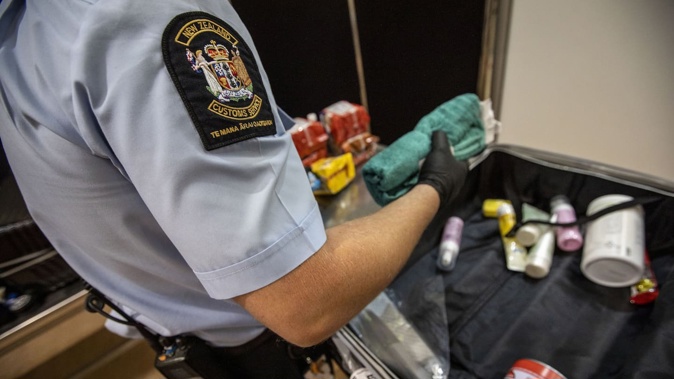
Northland is no longer the methamphetamine user capital of New Zealand — the unenviable title having returned to the Eastern policing district, according to the latest wastewater testing results from the nation’s sewerage plants.
The figures for the first quarter of this year reveal Northlanders consumed an average 700 milligrams (0.7g) per day per 1000 people — up from last year’s average of 600mg per day per 1000 people, but well down on a massive usage rate of 1152mg per day per 1000 people recorded near the end of 2021.
Northland was now ranked fifth for meth use out of all 11 of the country’s policing districts, the data — produced three-monthly for police by the Environmental Science and Research (ESR) — shows.
Results from Northland’s three testing sites — at Kaitāia, Kaikohe and Whangārei — showed an estimated $130,481 was spent weekly on methamphetamine in those areas, Detective Inspector Tim Chao, manager of the National Drug Intelligence Bureau (NDIB), said.
 During March last year, Northlanders held the unenviable title of being the country’s biggest meth users. However, the Eastern policing district has since taken over.
During March last year, Northlanders held the unenviable title of being the country’s biggest meth users. However, the Eastern policing district has since taken over.
Meth use increased in most districts during the latest quarter. Results show it spiked sharply, peaking in February at an estimated weekly usage rate of 20kg. However, it had dropped sharply again by the end of March. The national average consumption rate for the entire quarter was estimated at 17.5kg a week — up 3.5kg from the average of about 14kg consumed over the previous four quarters. A cost of the social harm caused by the drug was put at $19.4 million.
Northland’s latest average weekly use of meth was 326g. That’s between 3260 and 6520 doses because most users generally consume about a “point” (0.1g) of the drug in one or two doses daily.
 This chart shows the estimated average weekly use of meth, MDMA, and cocaine across all of NZ's policing districts per quarter since the beginning of last year. Graphic / NZ Herald, NZ Police
This chart shows the estimated average weekly use of meth, MDMA, and cocaine across all of NZ's policing districts per quarter since the beginning of last year. Graphic / NZ Herald, NZ Police
In addition to recording meth use, the wastewater testing programme looks for indicators of MDMA, cocaine, heroin and fentanyl use.
The only two other drugs usually detected in large-enough quantities to register in the results were MDMA and cocaine, albeit at comparatively scant rates to meth.
Cocaine use was up across all 11 of the country’s policing districts in Q1 2024, with an average weekly nationwide use amounting to 3.3kgs.
Northland’s average weekly use of the drug was 17g or about 85 doses.
Except for in Eastern, MDMA use had decreased nationwide in Q1 2024, averaging an estimated 6.2kg a week this year — consistent with the average quantity consumed over the previous four quarters.
Data for Northland showed its average weekly use of MDMA was 62g.
 The Drug Foundation urges caution in relying too heavily on quarterly wastewater figures alone in monitoring regional drug use, and says it's best to consider the data over a longer term. Graphic / NZ Herald, NZ Police
The Drug Foundation urges caution in relying too heavily on quarterly wastewater figures alone in monitoring regional drug use, and says it's best to consider the data over a longer term. Graphic / NZ Herald, NZ Police
A spokesperson for the NZ Drug Foundation said caution was needed in interpreting short-term trends, which could fluctuate greatly. It was important to look for long-term trends instead.
Police said the data provided a measure of the health and wellbeing of a community and was used as an evidence base for police, health, social services, and communities to come together to find local solutions to address the harms caused by drugs. It was not a targeting tool and did not identify those involved in illegal drug activities.
The factors that influenced usage and consumption were so varied, it made it extremely difficult to identify a specific cause. Global availability, as demonstrated by large domestic and international seizures, was likely to be a big factor, Chao said.
Declines in Northland’s drug use could be due to specific programmes in recent years such as Te Ara Oranga and Kaitāia’s MyWai pathway, which abandoned the failed “war on drugs” approach by offering addicts help to get off meth and into employment instead of repeatedly sending them to court..
Dealers, however, were still subject to the full force of the law.
 This chart compiled by police shows the estimated average weekly use of meth, MDMA, and cocaine across the nation’s 11 policing districts.
This chart compiled by police shows the estimated average weekly use of meth, MDMA, and cocaine across the nation’s 11 policing districts.
The nation’s cocaine use had been slowly advancing since 2022 and paralleled a global increase in production and supply of the drug, Chao said.
The Drug Foundation spokesperson said, “We will be keeping a close eye on whether cocaine use continues to trend upwards, as it does have a higher risk of addiction and harm compared to other more common drugs like MDMA.”
Drugs such as heroin or fentanyl that were plaguing countries overseas were still relatively uncommon in New Zealand, the Drug Foundation said. However, there was anecdotal evidence — reports from drug-checking providers — that ketamine had been on the rise in the past few years.
“We’re increasingly concerned about ultra-potent opioids, like fentanyl and nitazenes, that are fatal in doses as small as a grain of sand. We have seen these sold as other drugs, so we’re concerned about the risk of overdose if people don’t know they’re taking them.”
Police said the wastewater testing programme was still being developed and refined for those substances. Understanding legitimate use of them was necessary before reporting could begin.
- Wastewater results reflect between 60% and 70% of the population and do not of course monitor drug use that could be happening in areas with largely non-reticulated water systems.
- Cannabis is by far still the nation’s drug of choice. However, wastewater testing for it was challenging so results were gathered from only two New Zealand cities. The latest testing at those sites revealed a cannabis usage rate of at least 40 times more than methamphetamine, Chao said.
Sarah Curtis is a news reporter for the Northern Advocate focusing on a wide range of issues. She has nearly 20 years’ experience in journalism, much of which she spent court reporting. She is passionate about covering stories that make a difference.
Take your Radio, Podcasts and Music with you









